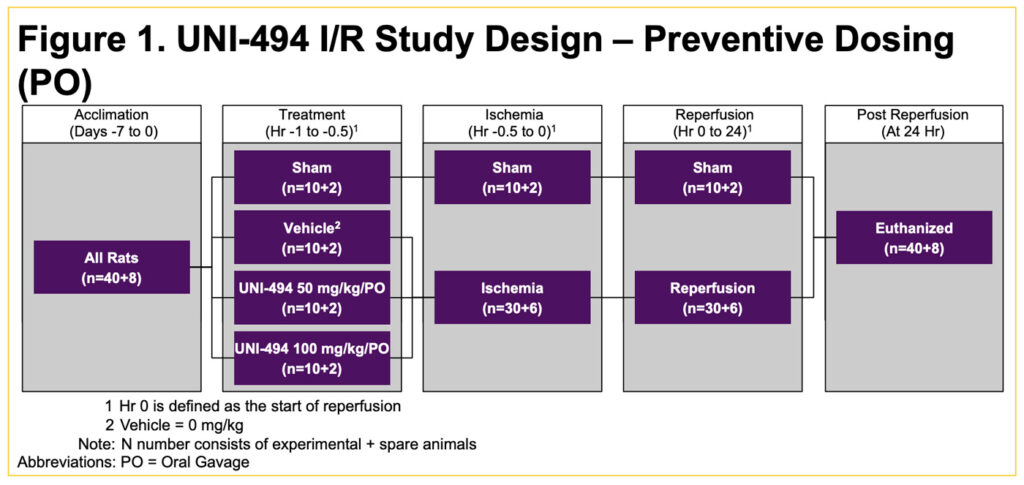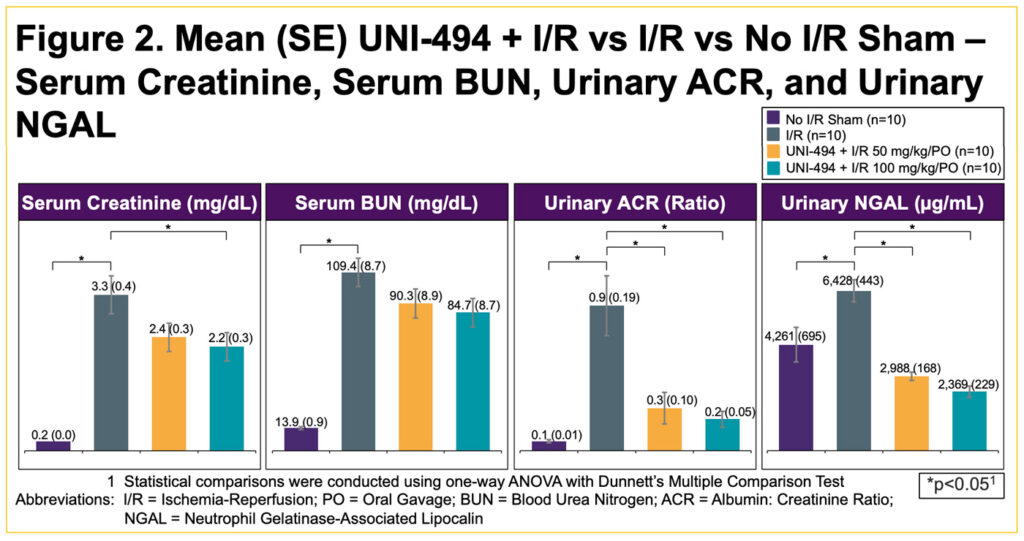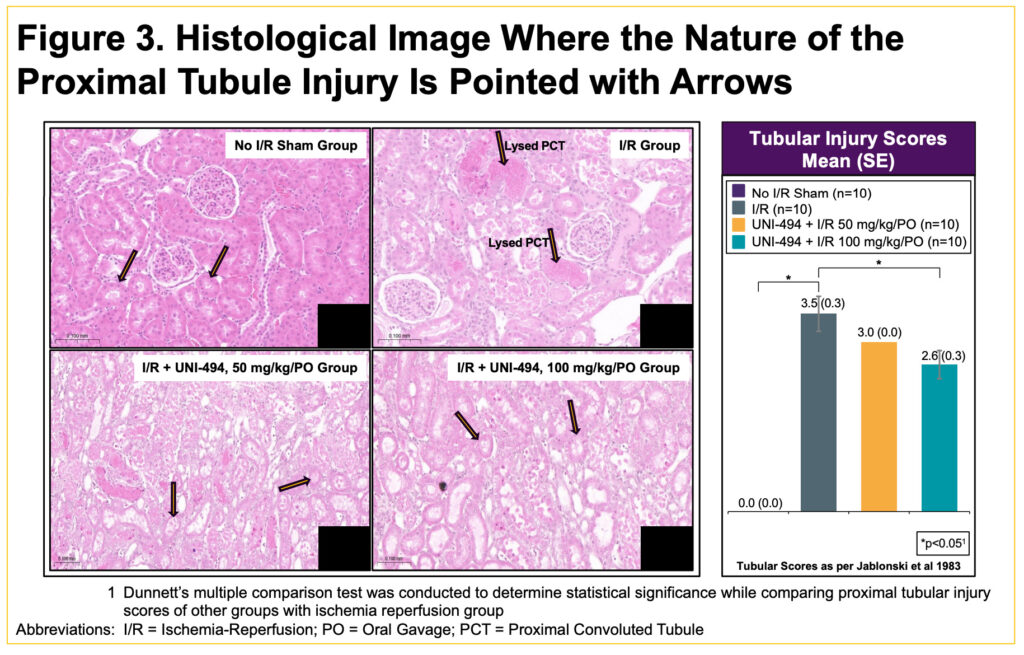S. MEDICHERLA1; G. REDDY1; S GUPTA1
1 Unicycive Therapeutics, Inc
Background
- There are no FDA approved drugs for the treatment of acute kidney injury (AKI), which affects 10-15% of hospitalized patients and often results in renal transplantation or lifelong dialysis
- Inflammation and reactive oxygen species driven mitochondrial permeability transition pore (mPTP) opening causes mitochondrial dysfunction/swelling and eventual cell death over time
- This is implicated in a wide range of acute diseases including AKI originating from ischemia reperfusion injury or delayed graft function (DGF)
- Furthermore, unresolved inflammation exacerbates sustained mPTP opening, evident in chronic kidney diseases
- Nicotinamide adenine dinucleotide can suppress the frequency and duration of mPTP opening
- UNI-494 is a selective mitochondrial ATP-sensitive potassium (KATP) channel activator that binds to the KATP channels, which reverses the mitochondrial dysfunction by closing the mPTP
- UNI-494 may be beneficial for several disease states, including AKI

OBJECTIVE
We present results from a study evaluating the in vivo efficacy of oral (PO) UNI-494 to prevent damage in the unilateral renal ischemia-reperfusion (I/R) rat model of AKI, which is a well-established model of DGF1
Methods
- Rats were anesthetized, the right kidney was removed, and I/R was induced in three groups of rats by clamping the renal vessels in the left kidney for 30 minutes; a fourth group had no surgery (sham group) without clamping the renal vessels
- 50 mg/kg or 100 mg/kg UNI-494 were administered PO 30 minutes prior to I/R (Figure 1)
- One I/R group and the sham group were not treated
- After 24 hours of reperfusion in metabolic cages, blood samples were collected for serum creatinine (sCr) and BUN
- 24-hour urine samples were collected for albumin-creatinine ratio (ACR) and the tubular injury marker neutrophil gelatinase-associated lipocalin (NGAL)
- At necropsy, the clamped left kidney was collected and processed for histology for proximal tubular injury scores

Results
- In this study, I/R induced significant increases of sCr, ACR, NGAL, and proximal tubular injury scores in the vehicle treated I/R group vs No I/R sham group
- A single PO dose of UNI-494 at 50 mg/kg/PO or 100 mg/kg/PO significantly reduced the kidney functional markers (sCr and uACR), the tubular injury marker uNGAL, and proximal tubular injury scores (Figure 2 & 3)
- All rats survived to the scheduled euthanasia time point. No clinical observations were noted during any phases of the study



CONCLUSIONS
- The results indicate that UNI-494 prevented AKI markers and proximal tubular injury scores in a rat model of AKI
- Additionally, kidney functional data (sCR and uACR) were very well supported by lower tubular injury marker uNGAL and proximal tubular injury scores from histology at both low and high doses reflecting a non-dose related trend with biomarkers and is dose-dependent for proximal tubule injury scores
- UNI-494 is a potential candidate for the treatment of patients with DGF and other clinical conditions dealt with AKI
References:
1. Cavaillé-Coll M. et al., Am J Transplant. 2013. May.
Acknowledgments:
Writing support was provided by Xelay Acumen Group, Inc., and funded by Unicycive Therapeutics, Inc.